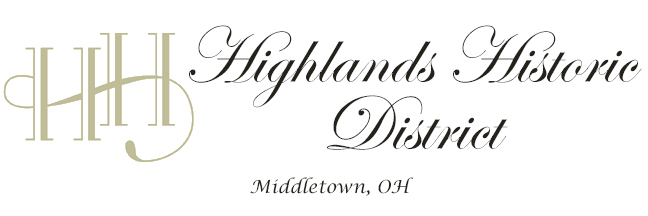Growing up Goldman in The Highlands
/Can you imagine what our beautiful neighborhood must have looked like when Charles Goldman first moved into the house now known as 301 The Alameda. June Haller wanted to know that and on February 1, 1974 Marcus Goldman, son on Charles and Minnie Goldman replied to her letter. Below is a section that describes the early 1900s Highlands neighborhood through his childhood eyes. Let us know in the comments what you think.
In those far off years none of the streets of our neighborhood were paved and the sidewalks were of cinders. Most of the streets were lined on both sides by tall Carolina poplars. Almeda Street was then called “The Almeda.” In Spanish Almeda means “poplar grove” or a street lined with poplars. In those days there was a fairly wide strip of lawn as a median in The Almeda, which was almost a foot higher than the roadway on either side opposite the house. Southward its elevation steadily declined until at the end of the long block, it was actually lower that the roadbed on either side. At this south end two pussy willows grew in a depression.
On the north side of Superior Avenue there was a small watercourse which was dry in midsummer, but quite a torrent after a melting of deep snow or a heavy rain. It began in a marshy depression at the east end of the avenue and flowed along it until it was within two or three blocks of Sutphin Avenue where it turned north and ran along the edge of Frisch’s cottage garden. My mother named the watercourse Rainy River, and I greatly enjoyed playing in it when a small boy. There were sometimes frogs in its marshy beginnings.
A small boy could have found few better places to grow up then 301 The Alameda, Middletown, Ohio. Except for the residence of the Thomas Hetzler family opposite there was no house within three blocks, and the open land in all directions belonged to either my father of my grandfather and I could roam at will. The great expanse of fenced-in blue grass about three blocks to the south, known as the Butcher’s Field, was then no longer used by a butcher but pastured a very considerable number of cows and horses owned by individuals who paid a small monthly sum for keeping them there. The field extended south to the Blue Ball Pike a small stretch entered the Butcher’s Field and flowed across it to the southwest to Dick’s Creek. There were frogs and crayfish in this little stream but no fish, although I repeatedly put small fish into it. I was much puzzled by the quick disappearance of those fish. Now I am inclined to think the stream was polluted by a dairy farm a short distance to the East, for the stream was certainly larger than some in which I have caught fish and well populated by lower organisms upon which fish feed.
A large flock of killdears lived along the stream and flew up with loud cries at one’s approach. There were also many meadow larks in the Butcher’s field and occasionally swarms of cow birds settled down to feed among the cattle.
The inhabitants of the field interested me most were the thirteen striped or federation ground squirrels, locally called “gophers.” They dug holes in the pasture, and it was feared that horses or cows might step into them and be lamed. I was given a Marlin lever action 22 caliber rifle on a birthday (the twelfth or thirteenth I believe) and was told that I would be paid five cents for every dead ground squirrel I produced. The Marlin was a very accurate weapon and I was a good shot by nature. I not only kept myself in ammunition but made additional pocket money by killing ground squirrels. The little animals were usually at the mouth of a hole when the bullet hit them and, apparently by reflex action, they very often tumbled down it, even when hit in the head. Fortunately I was accompanied by two “gopher hunters” even more eager than I, the family’s two Saint Bernards, Queen and her son, Prince. They accompanied me when I went shooting and would dig at the hole until they were able to retrieve the dead ground squirrel, thus making it possible to present the carcass for payment.
It was at this time that a number of flickers settled in the neighborhood and developed the bad habit of beginning at dawn to drum on the roof of the house not only to the destruction of shingles and timbers of the gables but to the immediate annoyance of the family, since sleep was impossible once the birds had started to hammer. My father, after a month or two of suffering from the flickers’ misplaced activity, secured, from the proper authorities, permission for me to shoot the flickers. Of course I could not shoot them while they were on the roof, but flickers, unlike other woodpeckers, feed on the ground. Those which were disturbing us settled, from time to time, in our private pasture on the north side of Superior Avenue. I managed to shoot a number of them there, and eventually the survivors understood the message and prudently withdrew from the neighborhood.

